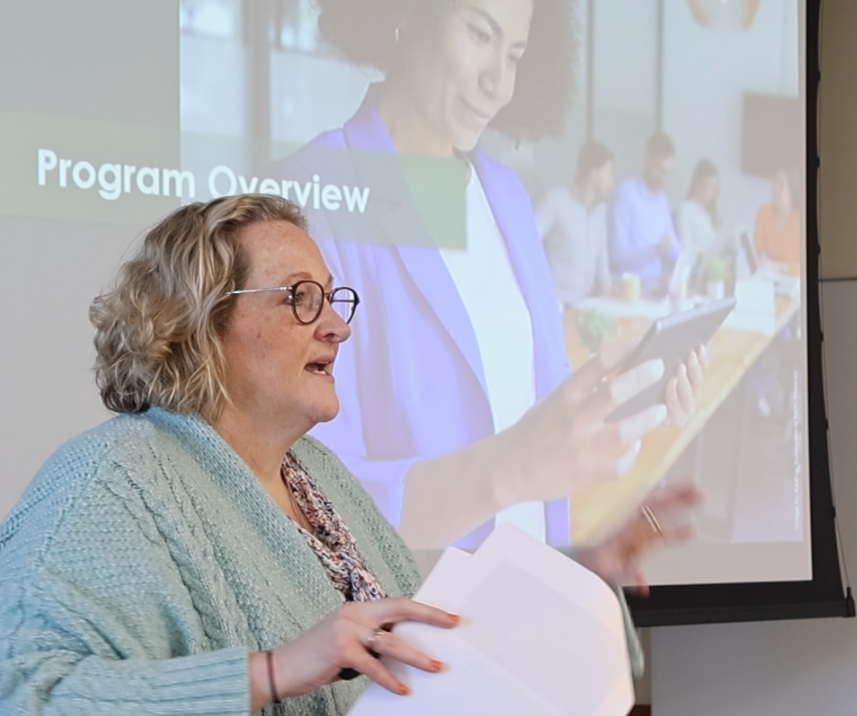
Peer teaching observations provide instructors with constructive, meaningful and actionable feedback to continually improve their instructional practices and skills to maximize student learning and impact. The fundamental purpose of the Peer Teaching Observation Program (PTOP) is to improve student outcomes by promoting competency-based approaches to teaching excellence.
PTOP Overview
The Peer Teaching Observation Program (PTOP) has been developed by faculty for faculty based on the eight criteria for Teaching Excellence approved by Faculty Senate in December 2022. PTOP faculty fellows offer the following points of emphasis to provide guidance in how to think about and frame.
PTOP is designed for anyone teaching at the Ohio University in any contracted capacity."Peer” means instructors/faculty observing instructors/faculty.
PTOP is not intended to be evaluative.Rather, through PTOP, a culture of peers observing peers and learning from one another is encouraged.
PTOP can be cross disciplinary.Cross disciplinary teaching observations may result in a fresh look at one’s own discipline area and pedagogical strategies. They also may help to alleviate assumptions or biases that sometimes arise when faculty observe colleagues in their area.
PTOP is a multistep processthat involves pre-observation work, the teaching observation itself and a post-observation conversation.
PTOP includes rubrics.Each of the eight criteria for teaching excellence has a detailed rubric that describes performance levels spanning “Needs Addressed” to “Exemplary.”
PTOP is an evolving process.Those implementing the process are encouraged to share feedback with CTLA.
PTOP Benefits
- Improves clarity and transparency
- Helps shift the institution toward a culture of continuous improvement
- Allows instructors to better identify their strengths and weaknesses
- Focuses feedback on competency building based on a rubric aligned to OHIO’s definition of teaching excellence
PTOP Process
Elements of the PTOP Process include:
- Pre-Observation Meeting—should be held 1-5 days before the class observation
- The Observation Using Full Scripting—to be completed by the observer and shared with the instructor along with the Post-Observation Form
- Post-Observation Form—to be completed by the observer and sent with the full scripting; should be sent to the instructor within 12 days of the observation and at least 48 hours before the Post-Observation Meeting
- Post-Observation Meeting—to take place within two weeks of the class observation
PTOP Designers
The team of faculty fellows designing the PTOP program during the 2023-24 academic year include:
- Dr. Linda Rice, Professor, College of Arts and Sciences
- Dr. Mark Rowe, Associate Professor of Instruction, College of Business
- Dr. Angela Hosek, Associate Professor, Scripps College of Communication
- Dr. Cheryl Geng, Associate Clinical Professor, College of Health Sciences and Professions
- Dr. Jenny Chabot, Professor, College of Health Sciences and Professions
-
Peer Teaching Observation Program Workshop
PTOP faculty fellows conducted an in-person training on March 20, 2024. This recording is designed to be viewed prior to conducting a peer teaching observation using the materials provided on this website.

PTOP Instructions, Forms and Rubric
Program Background and Overview
A full explanation of the PTOP development and a checklist of materials needed is available here.
Instructions and Forms
This document walks participants through the list of questions (aligned to the teaching excellence framework) to guide pre-observation discussions; an explanation of full-scripting, the observation and the post-observation process; and a post-observation form to assist in debriefing.
Complete Model
The PTOP faculty fellows completed a model for peer observers to review. It includes notes from the pre-observation meeting, a full-scripting sample, a completed post-observation form and meeting notes, as well as a sample letter.
Rubrics
Rubrics have been developed related to each of the teaching excellence criteria. They can be used to assist in providing feedback to the faculty being observed.
OSCQR Rubric
While the PTOP may be used to provide formative feedback on any course modality (in-person, hybrid or online), OHIO's Office of Instructional Design also provides online course review using the SUNY Online Course Quality Review Rubric (OSCQR) .
The rubric itself is open source and available for other institutions and individuals to use. The OID Instructional designers are certified OSCQR reviewers. As a result, OID is qualified to complete quality course reviews and collaborate with faculty on ways to improve the experience of their online courses.
Early-term and midterm Feedback
Student feedback on instruction plays a significant role in development of teaching excellence, and CTLA highly recommends instructors request early-term feedback from students during weeks 3 to 5 of the semester.
A short survey comprising two Likert-scale questions about course organization and sense of belonging, as well as three open-ended questions about 1) aspects of the course and instruction that support learning; 2) how the course or instruction could be adjusted to better support learning; and 3) what students could do to better support their own learning, allows instructors to do the following:
- Identify changes that might improve student learning and satisfaction this semester
- Indicate to students the importance of their experience and their learning
- Ensure students feel their voices have been heard
CTLA has created a Qualtrics survey with recommended and optional questions for instructors to use. In addition, staff are available to review survey responses with faculty who would like to consider what, if any, changes might be made to courses or instruction.
Email CTLA if you would like a copy of the survey in Qualtrics or in print form.

